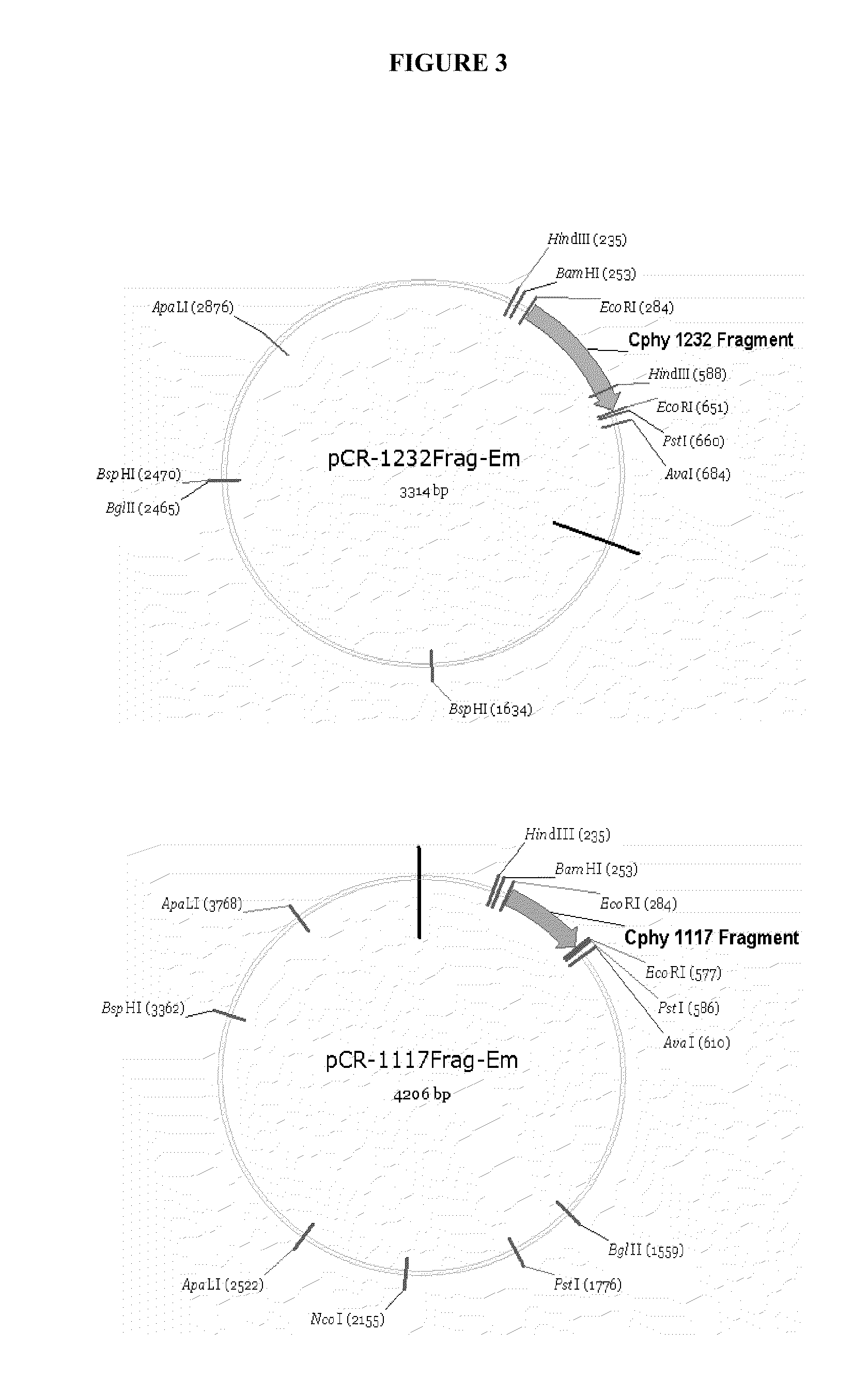Microorganisms with inactivated lactate dehydrogenase gene (LDH) for chemical production
a technology of lactate dehydrogenase and microorganisms, which is applied in the field of microorganisms with inactivated lactate dehydrogenase gene (ldh) for chemical production, can solve the problems of not being economically feasible, and achieve the effect of enhancing the production of fermentive end-products and reducing the capacity to synthesiz
- Summary
- Abstract
- Description
- Claims
- Application Information
AI Technical Summary
Benefits of technology
Problems solved by technology
Method used
Image
Examples
example 1
Knockout of LDH Gene
[0179]Metabolic Engineering of Clostridium Phytofermentans:
[0180]Carbon Flux Shift from Lactic Acid to Ethanol One method of redirecting the carbon flux in the cell to increase ethanol production required construction of a non-replicative plasmid system and its incorporation into C. phytofermentans. A new genetic transfer system (GTS) was created to introduce exogenous DNA into species and strains of Clostridium. Using this system, lactate dehydrogenase (LDH) genes were targeted and subsequently disrupted by a single crossover event in the Clostridium genome. C. phytofermentans has two LDH genes: Cphy—1232 and Cphy—1117 (for gene annotations, see http: / / www.genome.jp / ). Both genes were targeted and disrupted individually.
[0181]Fragments of LDH genes were cloned as follows:
[0182]In the genus Clostridium, efficient single crossover events occur when the fragment of the gene being targeted is in the interval of 300-650 bp. Primers were designed for the amplificatio...
PUM
| Property | Measurement | Unit |
|---|---|---|
| Temperature | aaaaa | aaaaa |
| Temperature | aaaaa | aaaaa |
| Fraction | aaaaa | aaaaa |
Abstract
Description
Claims
Application Information
 Login to View More
Login to View More - R&D
- Intellectual Property
- Life Sciences
- Materials
- Tech Scout
- Unparalleled Data Quality
- Higher Quality Content
- 60% Fewer Hallucinations
Browse by: Latest US Patents, China's latest patents, Technical Efficacy Thesaurus, Application Domain, Technology Topic, Popular Technical Reports.
© 2025 PatSnap. All rights reserved.Legal|Privacy policy|Modern Slavery Act Transparency Statement|Sitemap|About US| Contact US: help@patsnap.com



